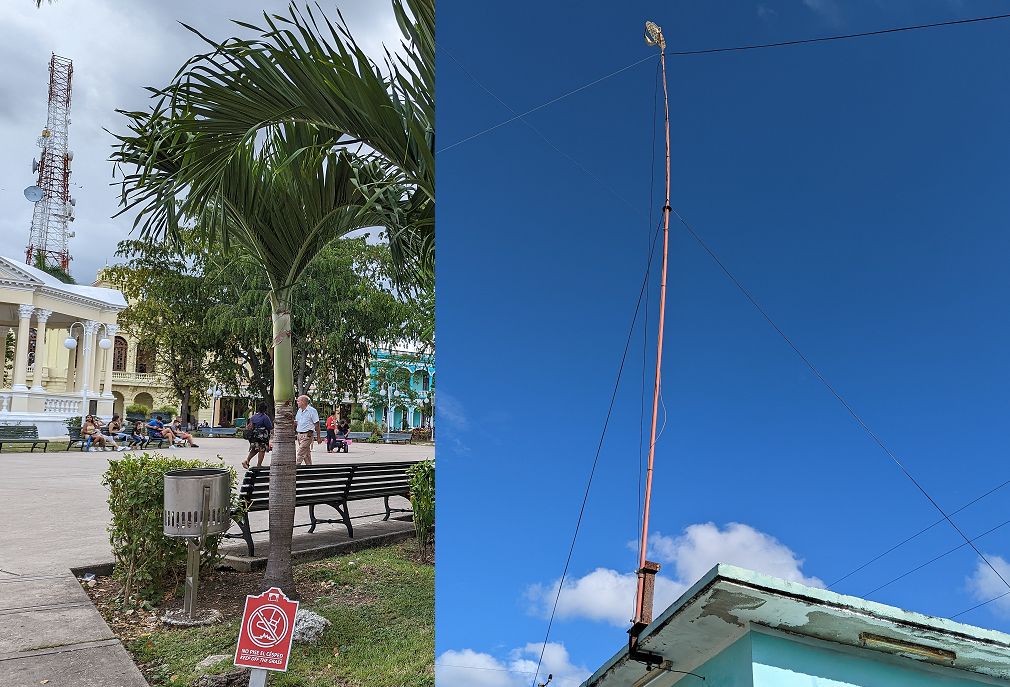A US-based mission group who helps churches in Cuba asked for help in setting up computer-based education for seminary students. Slow, unreliable Internet connections meant that traditional methods wouldn’t work there.

Instead of traditional wired connections (coax/cable modems or fiber), capturing WiFi from a public hotspot is how many locations in Cuba get their Internet. Above, the picture on the left shows an antenna that delivers WiFi (and other signals) in the town square. The picture on the right is an antenna trying to catch the remote WiFi signal. As you can imagine, this is less than ideal.
There aren’t many options available in Cuba, but we investigated the options while there to improve their connection. Even so, they still required an on-premise “server” to cache content instead of relying on an always available connection (that most of the world takes for granted). This was closer to client-server designs from the 1990s.
